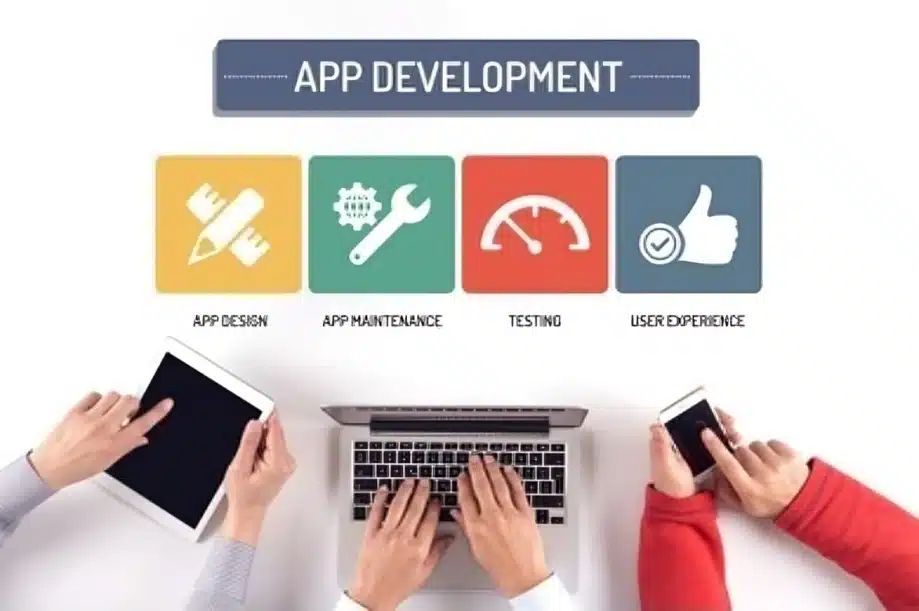A well-designed smartphone app may revolutionise business and entrepreneurship in today’s tech-driven society. However, merely submitting a concept to the app store is insufficient given the abundance of apps competing for users’ attention. You require a strategic strategy to direct development if you want your mobile app to succeed.
This roadmap acts as a guide, detailing the essential stages needed to take your app from conception to launch and beyond. We’ll examine the crucial actions that lead to the development of successful mobile apps here:
1. Determining the Need: Understanding the Problems Faced by Your Users
Understanding the issue your app seeks to address deeply is the first step in the path. Perform in-depth market research to determine the problems users face and the available fixes. What market niche are you occupying, you ask? By understanding customer requirements and annoyances, you may customise your app’s features to offer true value.
2. Validating the Market: Putting a Minimum Viable Product (MVP) to the Test
Don’t spend all of your efforts on a complicated app at first. Make a Minimum Viable Product (MVP), which is a condensed version of your program that just has the essential features. By releasing an MVP, you can quickly assess market interest and get actual user input. Before full-scale development, this useful data lets you fine-tune the features and functions of your program.
3. Outlining the Architecture of the App: Wireframing and Designing the User Interface (UI) and User Experience (UX)
It’s time to turn your notion into a visual representation after you’ve confirmed it. Low-fidelity mockups that illustrate the user flow and layout of the app are created during the wireframing process. The next step is UI/UX design, where the emphasis is on creating a user-friendly interface that looks good and puts the user’s experience first.
4. Developing and Testing: Constructing and Improving Your Application
After laying a strong foundation, development gets underway. Here, the development team of your choice codes features and integrates functionality to make your project a reality. During this phase, thorough testing is essential. Testers find issues, evaluate the app’s usability, and make sure it runs smoothly on various platforms and devices.
5. Launch and Beyond Deployment, Promotion, and Ongoing Improvement
The release of your software to the app store marks a significant milestone. But the task does not end there. To get momentum, you’ll need a well-defined marketing plan that promotes your app and reaches your intended audience.
Remember that a successful app is always developing. Continuously collect user input, assess app performance indicators, and iterate based on findings. This guarantees that your app remains current, meets user demands effectively, and retains a competitive advantage in the ever-changing mobile market.
By taking these strategic steps and addressing user demands, you can dramatically improve your chances of creating a mobile app that not only launches well but also flourishes in the long run.
Additional Considerations for Your Strategic Roadmap
While the basic roadmap offers a strong foundation, here are some extra considerations to enhance your mobile app development journey:
1. Choosing the Right Development Path: Native, Hybrid, and Progressive Web Apps (PWAs)
There are several techniques for mobile app development, each having benefits and drawbacks. Here is a basic breakdown:
- Native apps: Built specifically for a particular platform (iOS or Android), providing the best performance and user experience. However, native development necessitates distinct codebases for each platform, raising expenses.
- Hybrid Apps: Use web technologies such as HTML5 and CSS within a native app container. This allows for a single codebase but may result in worse performance than native apps.
- Progressive web Apps (PWAs): Essential web apps that use features like push notifications and offline capability to provide users with an app-like experience. PWAs are lightweight and cross-platform, however, their functionality may be limited compared to native apps.
The decision is based on your app’s requirements, target audience, and budget. Before deciding on a development route, carefully evaluate the following aspects.
2. Prioritizing Security and Data Privacy.
Mobile apps frequently handle sensitive user data, therefore security is critical. Implement strong security measures to secure user information and maintain compliance with applicable data privacy requirements.
3. Developing a Clear Monetization Strategy
While some applications are free to use, the majority require a monetization plan to earn income and continue development. In-app purchases, subscriptions, advertising, and freemium models (which give a basic free version with premium features for purchase) are all common alternatives.
4. Creating a Strong Development Team
The success of your app is dependent on the skill of your development team. When putting together your team, consider criteria like experience, skill set, and familiarity with your preferred development platform.
By including these extra elements into your strategic roadmap, you can develop a more thorough strategy that will put your mobile app on track for long-term success.

